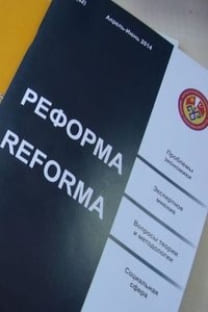THE DEVELOPMENT OF ANIMAL HUSBANDRY IN HOUSEHOLDS IN KYRGYZSTAN
animal husbandry, economy, agriculture
THE DEVELOPMENT OF ANIMAL HUSBANDRY IN HOUSEHOLDS IN KYRGYZSTAN
animal husbandry, economy, agriculture,
___
- Пиримбаев, Ж. Кыргыз Республикасынын экономикасы: окуу китеби. – Бишкек: КТМУ, 2007.
- Герасимов, А.П. Экономические аспекты формирования скотоводства на этапах социального развития региона // Региональная экономика: теория и практика. – 2012. – №17. – С. 51-54.
- Ситников, Н.П. Управление экономической эффективностью животноводства // Сельскохозяйственные науки и агропромышленный комплекс на рубеже веков. – 2014. – №6. – С. 172-177.
- Морозов, Н.М. Модернизация животноводства – теоретические и организационно-экономические аспекты // Техника и оборудование для села. – 2016. – №3. – С. 38-44.
- Шумакова, О.В., Емельяненко, К.В. Приоритетные направления формирования экономической эффективности молочного животноводства: Материалы международной научно-практической конференции // Современное состояние, перспективы развития молочного животноводства и переработки сельскохозяйственной продукции. – 2016. – С. 7-10.
- Хаустова, Г.И., Панина, Е.Б., Степанова, Т.А. (2016). Оценка влияния факторов на финансовую устойчивость животноводческих организаций // Экономика: вчера, сегодня, завтра. Том:6. №10А. – С. 117-129.
- КРдагы малга жана үй канаттууларга санак жүргүзүүнүн жыйынтыгы (2017-жылдын аягына карата). – Бишкек: Кыргыз Республикасынын Улуттук статистика комитети, 2018.
- Mundan, D. et al. Hayvancılık Sektörünün Kalkınma ve Sanayileşme Açısından Değerlendirilmesi: Adıyaman İli Örneği // Akademik Araştırmalar ve Çalışmalar Dergisi. – 2017. – № 9(17). – Р. 237-244.
- Vural, H., Fidan, H. Türkıye’de Hayvansal Üretim ve Hayvancılık İşletmelerinin Özellikleri // Tarım Ekonomisi Dergisi. – 2007. – № 13(2). – P.49-59.
- Köseman, A., Şeker, İ. Malatya İli Sığır, Koyun ve Keçi Yetiştiriciliğinin Mevcut Durumu // F.Ü.Sağ.Bil.Vet.Derg. – 2015. – № 29 (2). – P. 137-143.
- Demir, P., Aral, Y., Sarıözkan, S. Kars İli Süt Sığırcılık İşletmelerinin Sosyo-Ekonomik Yapısı ve Üretim Maliyetleri // YYU Veteriner Fakultesi Dergisi. – 2014. – № 25(1). – P. 1-6.
- Can, M.F., Sakarya, E. Dünya ve Türkiye’de Tarım ve Hayvancılık Kooperatiflerinin Tarihsel Gelişimi, İktisadi Önemi ve Mevcut Durumu // Vet. Hekim. Der. Dergisi. – 2012. – № 83(1). – P. 27-36.
- Mandaloğlu, M. Bozkır Türklerinde Ekonominin Hayvancılık ve Tarıma Dayalı Olarak Değerlendirilmesi // İnsan ve Toplum Bilimleri Araştırmaları Dergisi 2014. –№ 3(1). – P. 75-93.
- Sarıca, Ş., Ulutaş, Z., Şahin, A. Türkiye Hayvancılığının Mevcut Durumu // GOÜ Ziraat Fakültesi Dergisi. – 2004. – № 21(1). – P. 91-98.
- ISSN: 1694-5158
- Yayın Aralığı: Yılda 2 Sayı
- Başlangıç: 1999
- Yayıncı: Kırgızistan Türkiye Manas Üniversitesi
Cemal SEZER, Gulnara KARADENİZ
TÜRK CUMHURİYETLERİNDE TURİZM-İKTİSADİ BÜYÜME İLİŞKİSİ: PANEL NEDENSELLİK ANALİZİ
Azat ISHENALİEV, Zharkyn OMURZAKOVA
THE DEVELOPMENT OF ANIMAL HUSBANDRY IN HOUSEHOLDS IN KYRGYZSTAN
Nurlan MAMATOV, Junus GANİEV, Raziya ABDİEVA, Damira BAİGONUSHOVA
TECHNOLOGICAL PARADIGM OF THE EFFECTIVE INDUSTRIAL DEVELOPMENT OF THE KYRGYZ REPUBLIC
